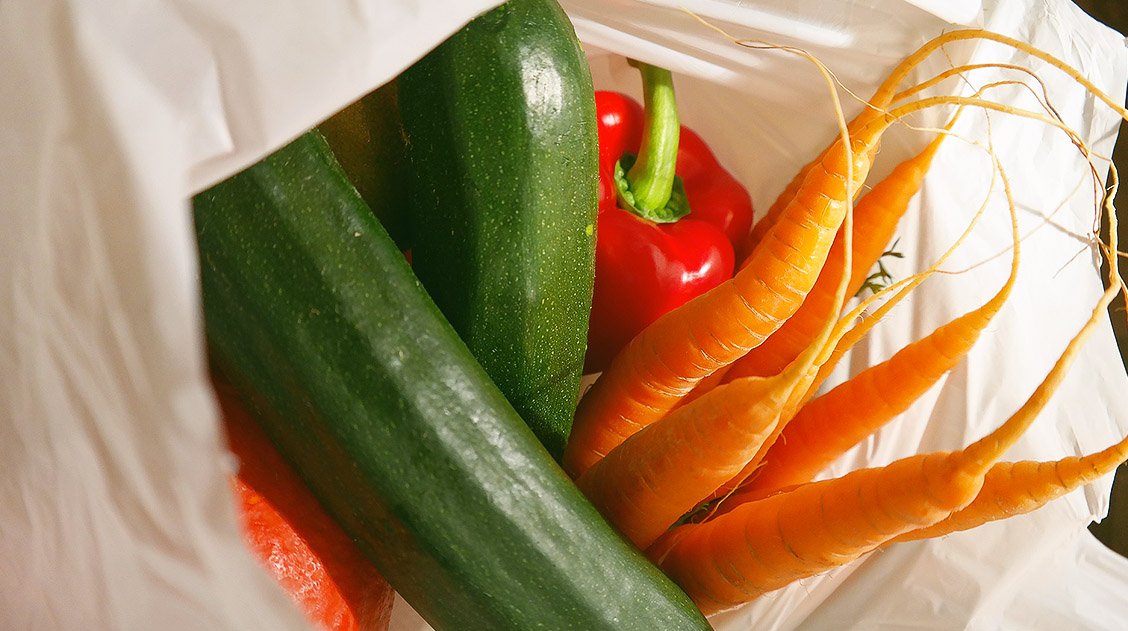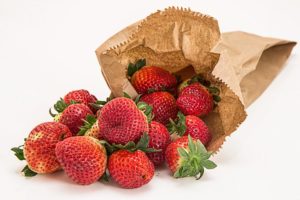
The Evolution of Shopping Bags
Margaret E. Knight, born on 14th February 1838, is recognized for her many inventions, including the first flat-bottom paper-bag-making machine. Knight’s machine helped to automate the bag-folding process, and the flat-bottom design provides a sturdier structure to carry items in. Since then, we’ve seen plastic bags, biodegradable bags, and other alternative shopping bags find their way onto the market.
Here, we look at the evolution of shopping bags since the invention of the paper bag.
Paper shopping bags

The first machine to create paper bags was patented by Francis Wolle in 1852. The design became hugely popular and many paper bag manufacturers adopted similar envelope-like designs. However, their weaker structure made it difficult to carry larger and heavier items.

Margaret E. Knight, when working in a paper bag plant in Massachusetts after the Civil War, improved on the design of Wolle’s bags. Specifically, Knight modified the design of the bottom of the bag to create a stronger, box-like structure. The flat bottom, as shown in the picture to the left, provides a sturdier structure to carry items in. The design is still used to make things like gift bags and paper shopping bags.
By 1868, Knight had successfully designed the first machine used to build flat-bottom paper bags with an automated folding process. However, to secure her patent, Knight had to defend her intellectual property in court.
Charles Annan had patented Knight’s design first. He had seen the design when visiting the factory it was built in. But Knight managed secure her right to the patent by presenting her own blueprints for her design. This was a huge success for Knight at a time when only 10% of patents were held by women. She then went on to found her own company and patented more than 25 products in her lifetime.
Plastic bags
Although flat-bottom paper bags are still widely used today, plastic bags have accounted for most of the market share in the bag industry since the 1980s.
Eric Fawcett and Reginald Gibson are credited with discovering the first industrially feasible polyethene synthesis method in 1933 at Imperial Chemical Industries in Northwich, England. Their discovery would lead to the production of plastic on an enormous scale.
Working at the company Celloplast at the time, Sten Gustaf Thulin created the one-piece plastic bag we’re familiar with today. The bag is made up of one piece of plastic that forms the handles and the main component of the bag. In 1965, Gustaf’s design was patented by Celloplast and plastic bags became not only common, but began to dominate the shopping bag market.
However, by the 1990s, scientists began to notice the harmful effects of plastic, especially in our oceans. Although the issue was discussed before this, Captain Charles Moore’s discovery of the Great Pacific Garbage Patch would raise the alarm about the effects of plastic debris and waste.
Since then, many studies have been conducted to figure out the exact impact of plastic waste and why we’ve produced so much. A paper recently published in Sustainability notes that waste mismanagement, social consumption and overproduction are the main drivers of plastic waste in the environment.
Plastic bag bans
Policies to reduce the use of plastic bags have been implemented in most countries. In fact, as noted in an article in Sustainability, 51 countries now have a ban on the production, use and sale of plastic bags.
Ireland and Bangladesh were the first countries to implement laws related to plastic bag use in 2002. Other policies such as taxes on plastic use have been successfully implemented in other places, like the UK.
The aim is to reduce the amount of plastic we produce by discouraging single-use plastics (SUPs). This will prevent waste and debris from contaminating our environment.
Another example of these policies is the ban on wrapping fruits and vegetables in plastic in France. One of our blog articles discusses the ban, enforced in January 2022, in greater detail.
Other recent research on microplastics has further elucidated the dangers of plastic waste in our environment. The MDPI journal Microplastics is dedicated to publishing important and innovative open access research on this topic.
Biodegradable bags
Bioplastic bags, or biodegradable bags, fit somewhere between the invention of and bans on plastic bags. They were created as an environmentally friendly alternative to plastic bags in the 20th century. Given that the harmful effects of plastic derive from how long they stay in the environment before degrading, this is a positive development.
Bioplastics are designed so that the plastic components in them break down into smaller parts. It is expected that these smaller parts will then be converted to CO2 or CO2 and CH4 under aerobic or anaerobic conditions, given the right microorganisms, pH, temperature, etc.
To label bags as biodegradable, certain standards needs to be met. For example, European standard EN 13432 requires that biodegradable bags completely biodegrade in six months. With alternatives like bioplastics gaining traction in the market, consumer preference for plastic bags could reduce.
Reusable bags
Other products, like tote bags, reusable plastic bags, compostable bags, and hemp bags, are also becoming more popular in place of plastic shopping bags. This indicates the decreased use of plastic bags in the future, which bodes well for global sustainability aims.
In fact, consumers have been found to favor bans on single-use plastics (SUPs), including plastic bags. For example, a survey of a Canadian population found 77% of people were in favor of plastic bans.
Another study published in an MDPI journal discusses legislation and consumer attitudes towards plastic bag bans in relation to biodegradable products. The authors use China, Western and Eastern Europe, North America, and Brazil as case studies. Consumers are now generally aware of the harm of plastic. And the results of this study suggest a positive change in consumer attitudes. The study concludes by noting that consumers are willing to share knowledge about biodegradable materials and to opt for alternatives to plastic.
Further research
We’re seeing a move away from the use of plastic bags in shopping and packaging due to environmental concerns, and their utility is diminishing as alternatives find their way to the market.
However, due to the resource-intensive production of plastic alternatives, including paper bags, they may not be a long-term solution. Given these uncertainties, it’ll be interesting to see how the way we shop changes in the future.
To read more on the topics mentioned here, or to find more information about the future of bag use for shopping, take a look at the open access research available on MDPI’s website.










